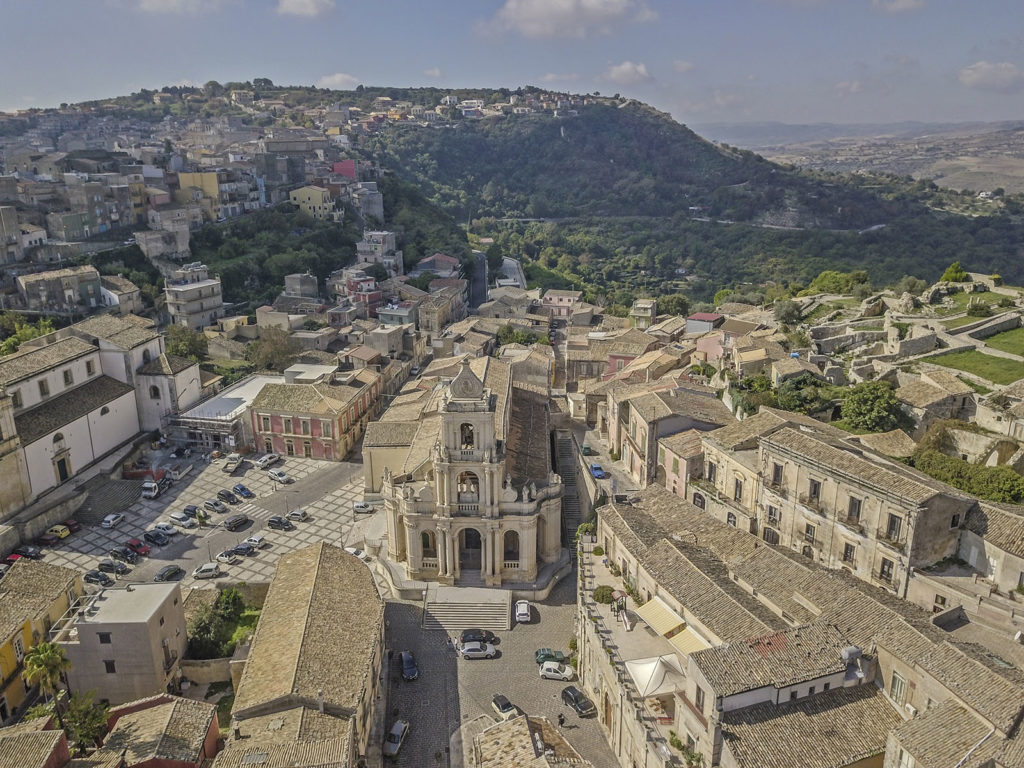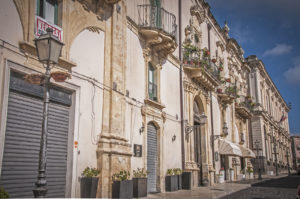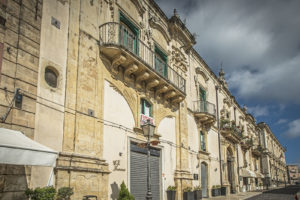Palazzolo Acreide is located further inland in Syracuse and is one of the oldest towns in the Val di Noto. Also struck by the 1693 earthquake, it was reborn from its rubble in the same location. Here the Baroque style fits in perfectly with the narrow, dense medieval streets.
Also struck by the 1693 earthquake, it was reborn from its rubble in the same location. Here the Baroque style fits in perfectly with the narrow, dense medieval streets.
Light enters the squares, making the façades and the contrasts between the colours stand out.
The town has three different construction phases that illustrate three different historical periods.
The medieval centre, which stood near former Acre, was located on a rocky spur in a strategic position for controlling the territory.
There stood a “palatium”, or imperial palace, which is probably where the name “palatiolum” of the new town came from. The oldest centre of the town was founded seventy years after the city of Syracuse, with which a lasting bond was built.
This new town on the plateau of the Hyblaean Mountains allowed trade between Syracuse and the other southern towns, promoting the spread of Hellenic culture in the centuries to come. After the tragic earthquake, the most important Baroque buildings and squares were built around the main street dedicated to Vittorio Emanuele. Palazzolo Acreide still retains some evidence of the ancient Greek city of Akrai: if you walk along Corso Vittorio Emanuele you’ll reach the
Greek theatre
.

